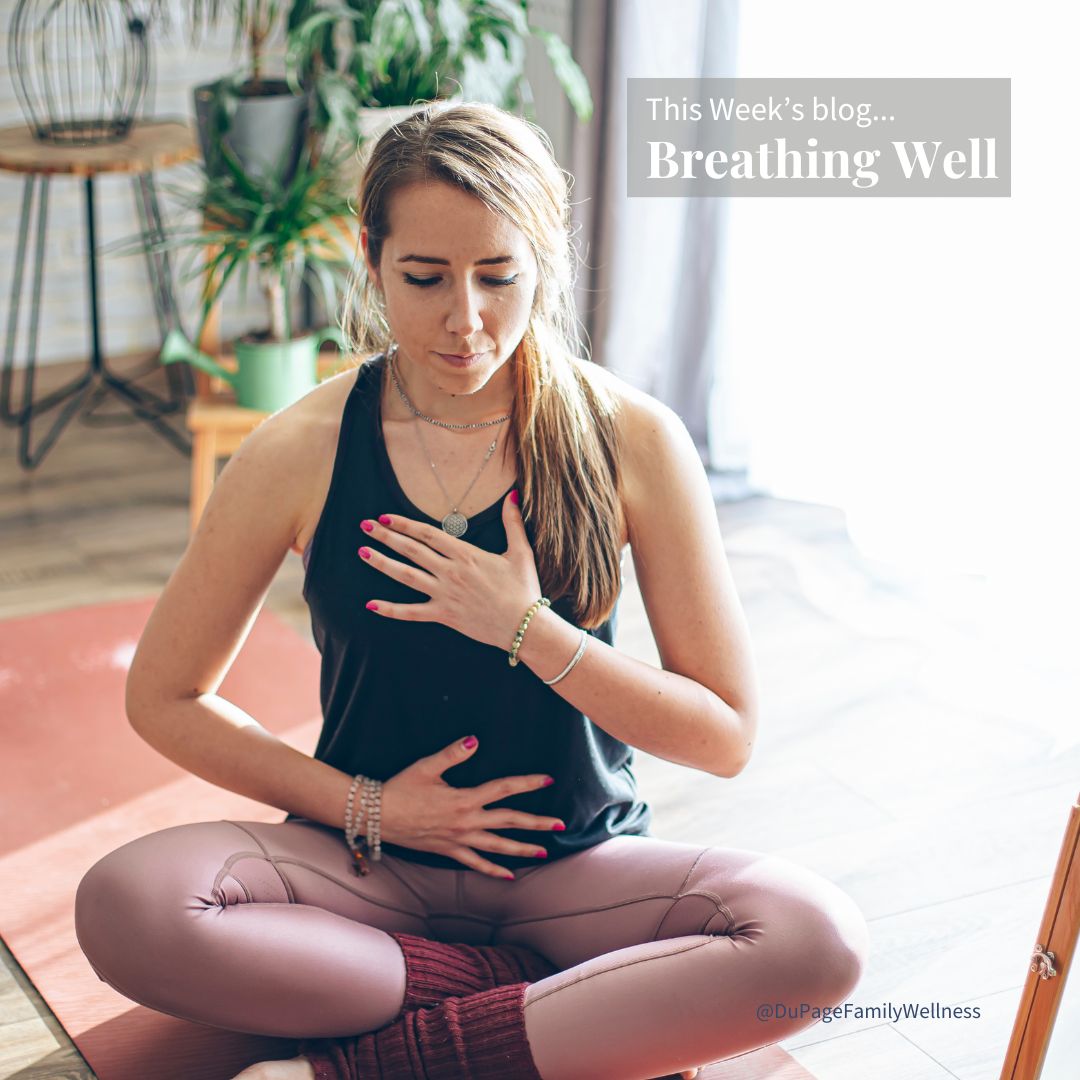 Proper breathing is crucial to health and helps maintain spinal stability. Faulty respiration mechanics can lead to recurrent back pain, shoulder problems, poor coordination, and lower cardiovascular endurance. It can also play a major role in chronic fatigue, anxiety, and panic attacks.
Proper breathing is crucial to health and helps maintain spinal stability. Faulty respiration mechanics can lead to recurrent back pain, shoulder problems, poor coordination, and lower cardiovascular endurance. It can also play a major role in chronic fatigue, anxiety, and panic attacks.
Unfortunately, improper breathing is more common than correct breathing. In a pilot study of 96 people in 2003 that assessed breathing mechanics, only 25% of people were found to breathe normally. The rest were either chest breathers, lacked normal movement of the lower rib cage, or had deep clavicular grooves.
Why are we such poor breathers? If you watch a baby breathe, they pretty much universally breathe perfectly. Over time, we spend many hours sitting in chairs, slumping forward at computers, or reclining while watching a show. These unnatural positions of our spine and rib cage cause us to find alternate ways to breathe.
Additionally, many of us look at models and strive for a "flat stomach." Normal breathing involves letting the belly go outward with each inspiration. It is impossible to breathe correctly when we hold our stomachs tight (consciously or subconsciously) to make them appear flatter.
Let's check your breathing and see if some adjustments could be beneficial.
Check Your Breathing
Try these steps in different positions: laying on your back, sitting up, standing, and doing an exercise such as a side plank. Some people breathe well in some positions but struggle with others. Check to see if your breathing fits the patterns below.
1. Place one hand over your abdomen/stomach, and another over your rib cage.
- During inspiration (breathing in) your abdomen should expand outward.
- During expiration, (breathing out) your abdomen should expand inward.
- Movement should start in the abdomen; not in the chest (even with a deep breath)
- Abdominal motion should be much more pronounced than rib/chest motion.
2. Now move one hand to each side of your body over your lower ribs and upper abdomen.
- The abdomen should expand all the way around through the entire cylinder, not just the front of the abdomen moving outward.
- As inspiration continues, the lower ribs should move outward in a horizontal plane.
- With your hands on your sides, the motion should seem equal on both sides
3. Are you breathing at an equal rhythm?
- Your heart rate should be fairly steady.
4. Brace your core as though I told you someone was going to "punch you in the stomach."
- Can you still take a breath with the proper mechanics?
Did you notice faulty breathing patterns like...
- A lifting-up motion of the entire rib cage.
- Chest movements predominate over abdominal breathing.
- No lateral (outward) movement of lower ribs.
- Movement is paradoxical (abdomen moved IN with inhalation and OUT with exhalation).
- Inability to maintain an abdominal brace and breathe normally.
- Shallow breathing with little or no motion through the abdomen or rib cage.
- Asymmetrical motion in the abdomen or rib cage.
- An abrupt rhythm or over-effort is observed.
- Inhalation and exhalation are rapid or uneven.
- Excess tension in the face, lips, jaw, tongue, or neck muscles.
- Sighs or yawns are frequent.
- Mouth breathing. Breathing in and out should be through the nose. (Mouth breathing can be added with more intense cardiovascular demands).
What if you are not breathing correctly?
You can learn to breathe better if you recognize what you need to change and practice until it becomes automatic.
Phase one...
- Relax the muscles in your neck and chest.
- Try to keep the chest still.
- Focus on exhaling and letting all of the air out while staying relaxed.
- Breathe with a low, slow, and steady rhythm to avoid deep breaths and sighs.
- Try to lengthen your exhalation so it is twice as long as inhalation.
Phase two...
- Practice breathing with one hand on your ribs and one on your abdomen.
- Be sure you get proper abdominal activity without excess chest motion.
- After several breaths, switch your hands to your sides.
- Check that your abdomen and lower ribs are moving outward.
Phase three...
- Focus on your breathing technique at least once an hour.
- Remind yourself - Put a note in a prominent place where you will see it. Set a time. Pair it with another activity (like stopping at a red light).
- Practice sitting up or lying on your back.
- Avoid slumped posture, tight clothes, and holding tension in your abdominals.
- Be mindful of signs of stress like sighing and raising your shoulders.
- Remember, if you have been breathing in a less-than-ideal way for years it will take time to change.
- Keep practicing, be patient, and give your body time to relearn proper breathing mechanics.
I'd be happy to help if you would like more guidance. Call our office at 630-448-0255 or schedule online to set up a consultation. Let's get you started on your way to breathing better and feeling your best!
Dr. Jamie

